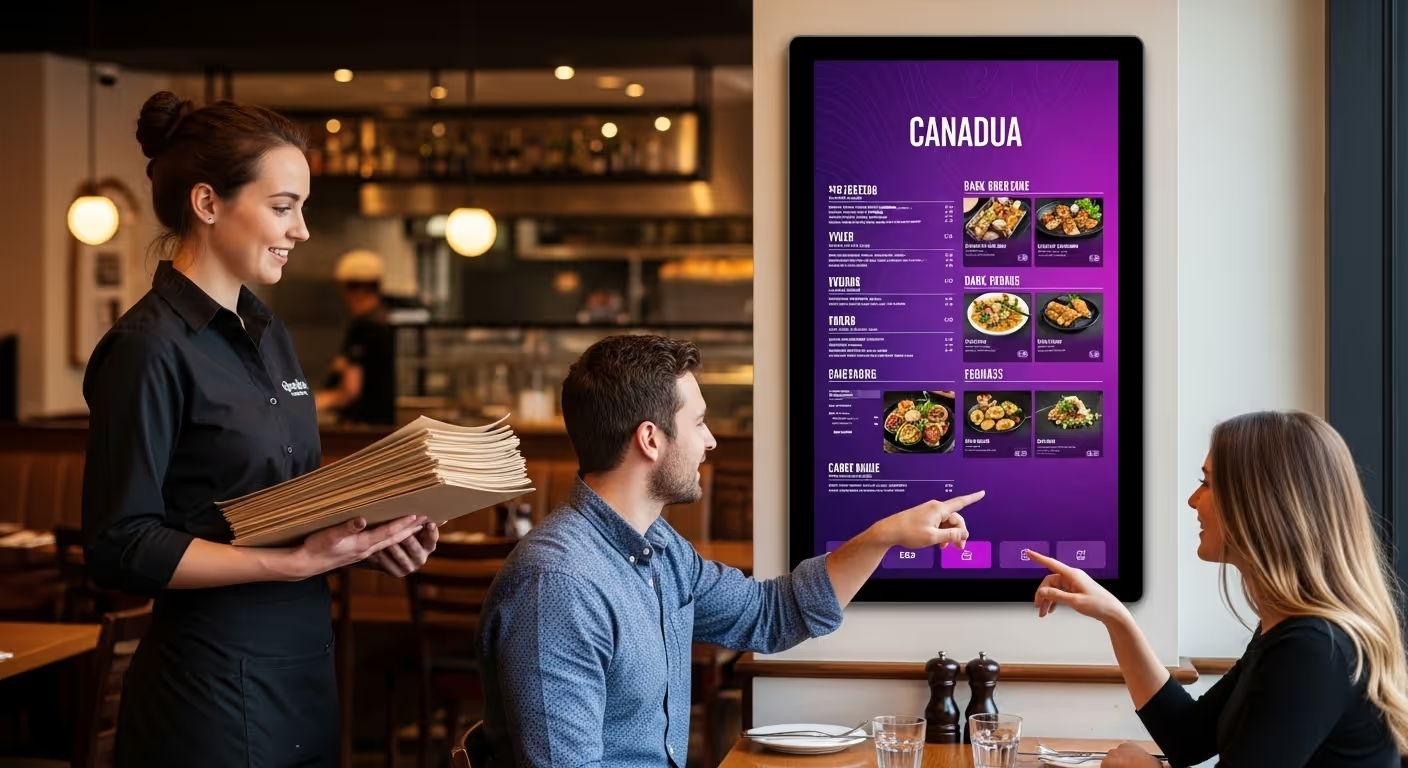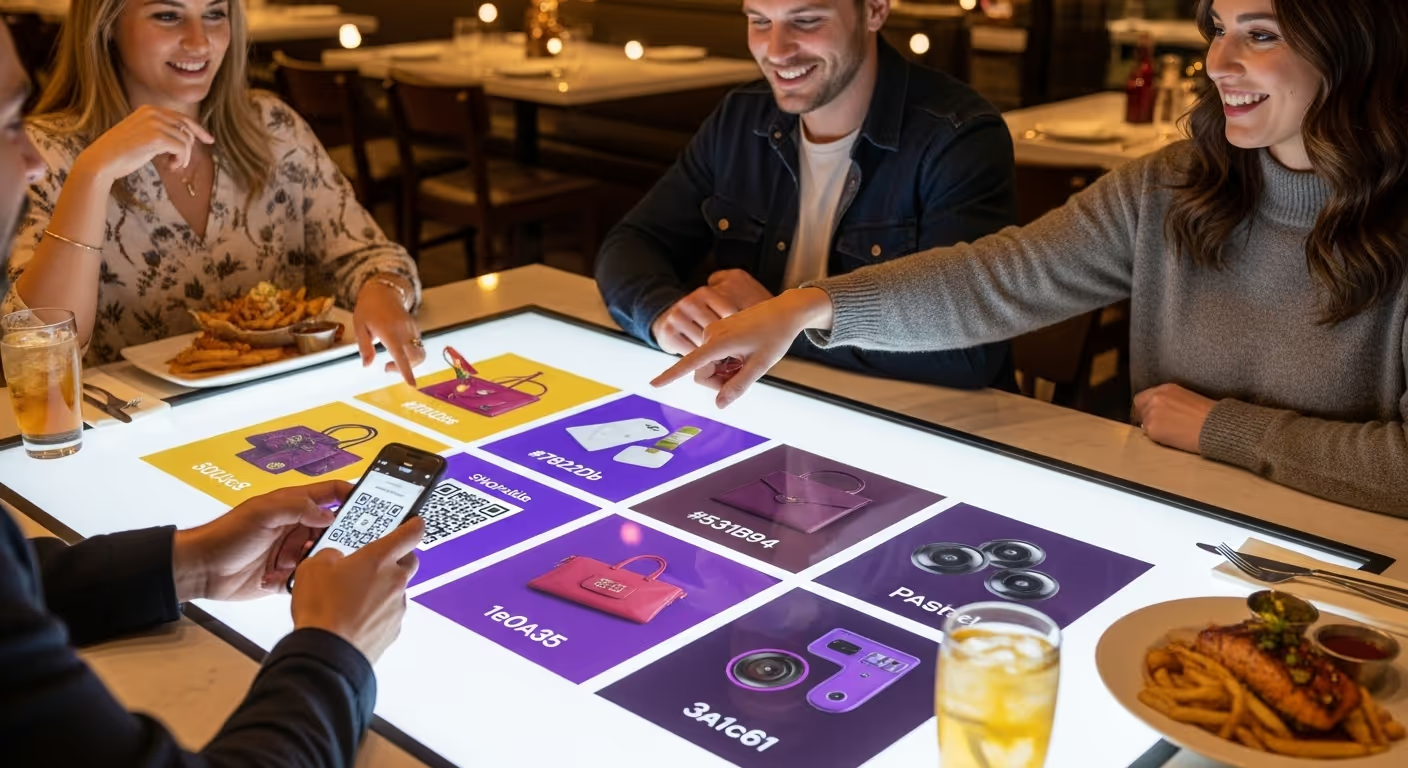Why measuring DOOH performance matters
Digital Out of Home (DOOH) advertising is growing quickly in Canada, especially in restaurants. But for campaigns to prove their value, both advertisers and restaurant owners need clear ways to measure results. Unlike static posters, DOOH provides detailed data that shows exactly how campaigns perform.
Key metrics to track
There are several important metrics that reveal how effective a DOOH campaign is:
- Impressions: The number of times an ad is displayed to diners on tabletop screens
- Dwell time: How long guests spend near the screen, often more than an hour in Canadian restaurants
- Frequency: How many times the same guest is likely to see a campaign during their visit
- Engagement: Actions taken by guests, such as scanning a QR code or interacting with AR content
- Brand lift: Measured by surveys or studies to see changes in awareness, recall, and perception
Impressions and dwell time
One of the biggest advantages of DOOH in restaurants is the length of exposure. Guests spend an average of 60 minutes or more at the table. That gives campaigns dozens of chances to be seen and remembered. Measuring impressions alongside dwell time provides a clear picture of reach and impact.
QR scans and direct actions
Modern DOOH campaigns often include QR codes that link to websites, offers, or online shops. Tracking the number of scans gives advertisers direct insight into how many guests acted on the ad. Restaurants can also benefit when QR codes link to promotions or digital menus, creating measurable upsells.
Brand lift studies
Some campaigns go further by running brand lift studies. These surveys measure changes in guest perception after seeing ads. Results might include higher brand recall, stronger relevance, or improved purchase intent. For example, Adidas reported double the brand recall when running DOOH campaigns compared to static out-of-home ads.
Engagement with interactive features
When DOOH ads use AR, games, or polls, engagement becomes an even stronger metric. Restaurants can measure how many guests interacted, how long they stayed engaged, and whether they shared content on social media. These insights show not just reach but also depth of attention.
Restaurant performance indicators
For restaurants, DOOH isn’t just about ad impressions — it’s about bottom-line results. Key performance indicators include:
- Number of upsells triggered by screen promotions
- Average tip values before and after adoption
- Revenue from ad campaigns hosted in the venue
- Reduction in print menu costs
Tracking these metrics shows how DOOH supports both guest experience and financial performance.
Dashboards and reporting
DOOH providers in Canada usually include dashboards that track impressions, campaign reach, and QR scans in real time. Advertisers can log in to monitor results, while restaurants can see how campaigns are performing in their venue. Reports make it easy to share results with partners and stakeholders.
Why measurement builds trust
Advertisers want proof that their money is well spent, and restaurants want confidence that hosting campaigns makes sense. Clear metrics and transparent reporting create that trust. By showing results with numbers, DOOH becomes a reliable channel alongside digital and social media.
Challenges to avoid
While measuring DOOH is powerful, there are some challenges:
- Not all engagement can be captured, especially offline influence
- Over-relying on impressions without looking at dwell time or actions
- Ignoring restaurant-side results like upsells and guest satisfaction
Balancing multiple metrics ensures a more complete understanding of campaign success.
How Canadian restaurants benefit
Because diners in Canada spend longer at tables, measurement data is especially rich. Restaurants can clearly see how promotions, upsells, and guest actions tie back to screen content. This creates a cycle where campaigns are tested, refined, and improved continuously.
Key takeaways
- Measuring DOOH means tracking impressions, dwell time, and actions
- QR scans and AR features show direct guest engagement
- Brand lift studies prove long-term impact
- Restaurants gain financial and operational insights alongside ad data
With the right measurement tools, DOOH isn’t just advertising — it’s a proven, trackable strategy that delivers value for both brands and restaurants.






.svg)
.svg)


